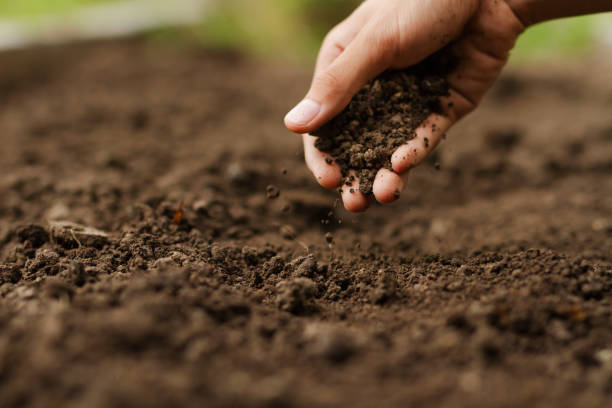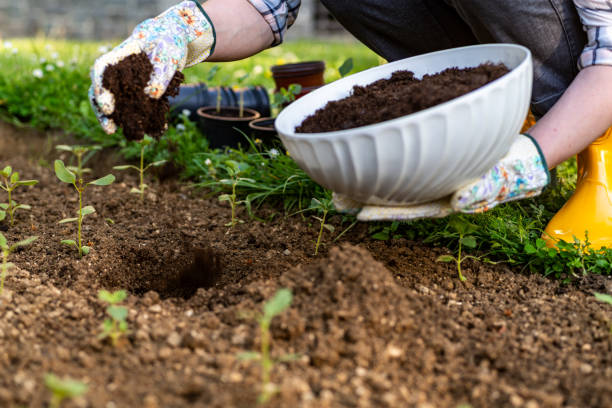
If you’re looking to improve the health and appearance of your flower beds, adding soil can be a great way to do it. Whether your existing soil is depleted, compacted, or simply lacking in nutrients, adding fresh soil can provide a number of benefits. In this guide, we’ll walk you through the process of adding soil to your existing flower beds, step by step.
Assessing Your Flower Bed
Before you start adding soil to your flower bed, it’s important to assess its current state. Take a walk around your garden and evaluate the soil quality, moisture level, and any potential problem areas that need to be addressed. This will help you determine how much soil you need to add and what kind of soil to use.
Evaluating the Current State of the Flower Bed
Look for signs of soil compaction, erosion, or depletion, which can be indicated by thinning or sparse vegetation, bare patches, or weeds. Check the soil’s moisture level by digging a small hole in the soil and feeling the soil. If it’s dry to the touch, your soil may need additional watering or organic matter to improve its moisture retention.
Identifying Problem Areas
Consider the specific needs of the plants growing in your flower bed. Are they shade-loving or sun-loving? Do they prefer well-drained soil or a damp environment? Certain plants may require specific soil types, so keep these factors in mind when adding soil to your flower bed.
Determining the Amount of Soil to Add
To determine how much soil you need to add, calculate the volume of your flower bed by measuring its length, width, and depth. Then, subtract the existing soil volume from the desired soil depth, and you’ll get the volume of soil you need to add.
Choosing the Right Soil

The soil you choose to add to your flower bed will play a significant role in its health and success. Here are some things to consider when choosing the right soil:
Types of Soil
There are several types of soil available, including loam, sand, silt, and clay. Loam soil, which is a combination of all four types, is ideal for most garden plants as it provides a good balance of drainage and moisture retention.
Soil pH
The pH level of your soil is also an important consideration. Most plants prefer soil with a pH between 6.0 and 7.0, but some may prefer more acidic or alkaline soil. You can test your soil’s pH level with a soil test kit or by sending a sample to a lab for analysis.
Nutrient Content
The nutrient content of your soil is another important factor to consider. Look for soil that is high in organic matter and has a good balance of macronutrients such as nitrogen, phosphorus, and potassium. This will help ensure that your plants have the nutrients they need to grow and thrive.
Preparing Your Flower Bed

Before you start adding soil to your flower bed, it’s important to prepare the area by clearing away any debris or weeds and aerating the soil to improve drainage.
Clearing Away Debris and Weeds
Clearing away debris and weeds is an essential step in preparing your flower bed for the addition of fresh soil. Debris and weeds can rob your plants of essential nutrients, water, and sunlight, and can also provide shelter for pests and diseases. By removing them from your flower bed, you can create a healthier environment for your plants to thrive in.
Debris can include anything from fallen leaves and twigs to rocks and other hard objects. These items can make it difficult for your plants to grow, as they can obstruct their root systems and prevent them from establishing a strong foundation. In addition, debris can also trap moisture, which can lead to root rot and other fungal diseases.
Weeds, on the other hand, can be even more harmful to your plants. They can compete with your plants for water, nutrients, and sunlight, which can stunt their growth and leave them vulnerable to disease and pest infestations. Weeds can also be difficult to remove, as they often have deep root systems that make them resilient to traditional weed control methods.
To clear away debris and weeds, start by using a rake or garden fork to loosen the top few inches of soil. This will make it easier to remove any debris and weeds by hand or with a hoe. Be sure to remove as much of the roots as possible to prevent regrowth. If you have a large amount of debris or weeds, consider using a garden waste bag to dispose of them properly. Once you’ve cleared away the debris and weeds, you’ll be one step closer to creating a beautiful and healthy flower bed that will thrive for years to come.
Amending the Soil
Amending the soil is an important step in preparing your flower bed for the addition of fresh soil. By adding organic matter and nutrients, you can improve soil health and provide your plants with the support they need to grow and thrive. Here are some bullet points and a paragraph explaining how to amend the soil:
- Compost: Compost is an excellent source of organic matter and nutrients. You can buy it pre-made or make your own by composting kitchen and yard waste. Work the compost into the top few inches of soil, being careful not to disturb any existing plant roots.
- Fertilizer: Fertilizer can also be used to amend the soil. Look for a balanced fertilizer that contains equal parts nitrogen, phosphorus, and potassium. Apply the fertilizer according to the manufacturer’s instructions, being careful not to over-fertilize, as this can burn your plants’ roots.
- Manure: If you have access to animal manure, this can also be a great soil amendment. Use only well-aged manure, as fresh manure can be too high in nitrogen and burn your plants’ roots. Work the manure into the top few inches of soil, being careful not to disturb any existing plant roots.
- Vermicompost: Vermicompost is compost that has been produced by worms. It is rich in nutrients and microbial life and can be a great addition to your flower bed. Mix the vermicompost into the top few inches of soil, being careful not to disturb any existing plant roots.
To amend your soil, start by clearing away any debris and weeds from your flower bed. Then, spread the chosen organic matter evenly over the soil, and work it into the top few inches of soil. Be careful not to over-amend your soil, as this can cause nutrient imbalances and harm your plants. With the right amendments, you can create a healthy and supportive environment for your plants to grow and thrive.
Adding the Soil

Now that you’ve prepared your flower bed, it’s time to start adding soil. Here’s how to do it:
Methods for Adding Soil
There are a few methods you can use to add soil to your flower bed. You can either spread the soil evenly across the entire bed, or you can create raised mounds or berms for your plants to sit on. If you choose to create mounds or berms, make sure they are large enough to accommodate the root systems of your plants.
Techniques for Ensuring Even Coverage
When adding soil to your flower bed, make sure it is evenly distributed across the entire area. Use a rake or shovel to spread the soil, being careful not to bury any existing plants or cover them with too much soil.
Avoiding Overfilling or Burying Existing Plants
Be careful not to overfill your flower bed with soil, as this can cause water to pool and suffocate your plants’ roots. You should also avoid burying existing plants, as this can cut off their oxygen supply and kill them.
Watering and Maintenance
After adding soil to your flower bed, it’s important to water your plants and monitor them for any signs of stress or disease. Here are some tips for watering and maintaining your flower bed:
Proper Watering Techniques
Water your plants deeply and regularly, being careful not to overwater or underwater them. You can use a drip irrigation system or a soaker hose to help ensure even moisture distribution.
Tips for Maintaining Your Flower Bed
Maintaining your flower bed is an important aspect of ensuring that your plants continue to grow and thrive. Here are some tips for maintaining your flower bed:
- Watering: Regular watering is essential for your plant’s health. Water deeply and regularly, being careful not to overwater or underwater your plants. You can use a drip irrigation system or a soaker hose to help ensure even moisture distribution.
- Weeding: Keep your flower bed free of weeds, as they can compete with your plants for nutrients and water. Regularly remove any weeds that pop up in your flower bed, being careful not to disturb any existing plant roots.
- Fertilizing: Periodically fertilize your plants to ensure they have the nutrients they need to grow and thrive. Use a balanced fertilizer that contains equal parts nitrogen, phosphorus, and potassium. Apply the fertilizer according to the manufacturer’s instructions, being careful not to over-fertilize.
- Pruning: Regularly prune your plants to remove dead or damaged growth, and to promote healthy growth. Use clean, sharp pruning shears to prevent the spread of disease, and prune your plants at the appropriate time of year for their specific species.
- Pest Control: Keep an eye out for pests such as aphids, mites, and other insects that can damage your plants. You can use organic pest control methods such as insecticidal soap, and neem oil, or beneficial insects such as ladybugs to keep pest populations in check.
- Mulching: Mulching can help regulate soil temperature and moisture, and can also suppress weed growth. Apply a layer of organic mulch such as wood chips, straw, or leaves around your plants, being careful not to cover their stems or foliage.
By following these tips, you can ensure that your flower bed continues to thrive and provide you with beautiful blooms for years to come. Regular maintenance and care are essential to a healthy and vibrant garden.
Conclusion
Adding soil to your existing flower beds is a great way to improve their health and appearance. By following these tips, you can ensure that your plants have the nutrients and support they need to grow and thrive. With a little bit of effort and care, you can enjoy a beautiful and vibrant garden that will bring you joy for years to come.





